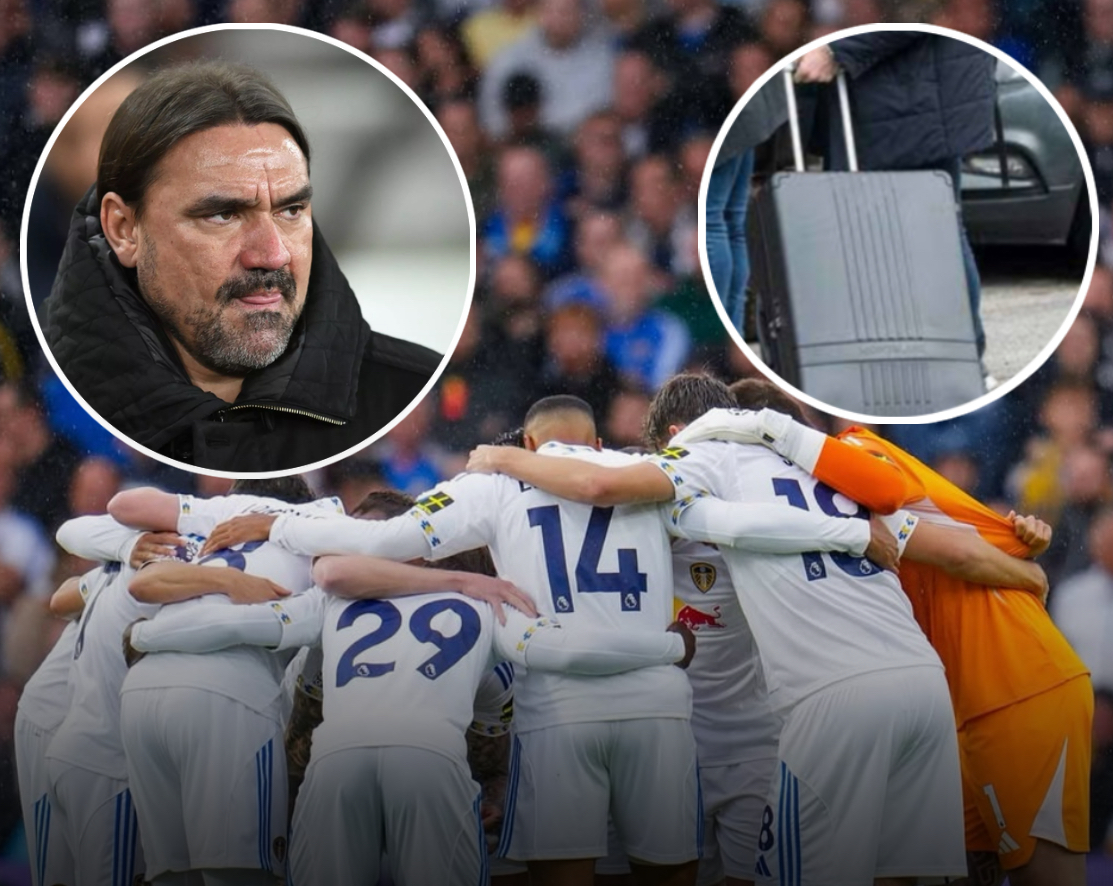LEEDS UNITED ANNOUNCED HUGE DEPARTURE JUST HOURS AFTER EMBARRASSING DEFEAT TO ASTON VILLA
When the final whistle blew at Elland Road after Leeds United’s bruising, demoralising defeat to Aston Villa, the mood on the terraces was already bleak. Fans shuffled out of the stadium drenched in frustration, their voices hoarse from the chorus of groans that had haunted the second half. But nobody—absolutely nobody—expected the evening to take an even darker turn.
Yet, within hours of the 1–2 humiliation that exposed everything wrong with Leeds’ season, the club released a shocking and deeply unsettling announcement: major investors had officially exited the project, walking away from the club at a moment when stability, unity, and financial muscle were needed more than ever.
The statement dropped like a bombshell. Supporters who had barely recovered from the atrocious defensive mistakes of the match were suddenly faced with a much bigger crisis—one that could reshape the future of the club far beyond one bad result.
And perhaps what stings even more is the timing. The announcement came so quickly after the defeat that many fans believe it wasn’t a coincidence at all, but a sign that something behind the scenes has been simmering for weeks.
A CLUB THAT LOOKED LOST ON THE PITCH
Before diving into the departure itself, it’s impossible to ignore the wider context: Leeds’ performance against Aston Villa was, frankly, one of the most troubling of the season.
The team looked flat.
The energy was gone.
The fight was missing.
And the defensive organisation—which fans have complained about all season—was completely absent again.
What frustrated supporters most wasn’t just losing the match; it was the manner of the defeat:
- careless passes under no pressure
- marking that looked optional
- slow reactions throughout the midfield
- heads dropping after the first setback
- no clear structure or identity
By the time Aston Villa scored their second goal, thousands of fans already sensed the meltdown was coming. The final whistle only confirmed what they feared: this wasn’t just a bad game. This was a team in crisis.
And now, it turns out the crisis wasn’t confined to the pitch.
THE ANNOUNCEMENT THAT SHOCKED ELLAND ROAD
Late in the evening, long after fans had gone home, Leeds United quietly—almost too quietly—released a club statement confirming what insiders are calling “a strategic restructuring of ownership involvement.”
That was the polite way of saying it.
The reality?
Key investors had left the club.
Just hours after the embarrassing loss, the club revealed that a significant financial group had chosen to withdraw its investment and step away from its partnership with Leeds United. For supporters, it felt like a slap in the face: the team crumbled on the pitch, and now the financial foundations seemed to be shaking too.
At a time when Leeds desperately need reinforcement, leadership, and financial strength, the departure of major backers leaves the club facing a whole new level of uncertainty.
The club tried to frame the exit as a “mutual agreement,” but no one is buying that explanation—not after such a catastrophic performance against Aston Villa.
**WHO LEFT?
THE IDENTITY REVEALED MIDWAY THROUGH THE CHAOS**
As the dust settled and reporters scrambled for details, the identity of the departing investors came into focus:
a portion of the 49ers Enterprises investment group, specifically a cluster of minor stakeholders who had backed the club during the early phases of the takeover, have now stepped aside.
These individuals weren’t the main controlling owners, but they were crucial secondary investors whose capital supported key operations—from academy development to infrastructure to transfer negotiations.
Their departure is a troubling signal.
When investors lose confidence, it usually means they either:
- Don’t believe the project is moving in the right direction,
- See internal instability, or
- Want to avoid further financial losses.
Insiders say the recent run of poor form, disagreements over spending, and fears about failing to secure promotion—or, worse, slipping further down the table—played a major role in their decision.
WHY NOW? THE TIMING THAT HAS EVERYONE TALKING
The biggest question isn’t who left.
It’s why they left now.
Fans have been debating the timing all day, and several theories have emerged:
1. The Aston Villa defeat was the final straw
Supporters believe the investors watched the game, saw a club without direction, and decided they didn’t want to be part of the chaos.
2. Internal disagreements over funding
Rumours around Elland Road suggest the departing backers were unhappy with how little money was being invested into key areas—especially the transfer budget.
3. Concerns over leadership
Whispers behind the scenes hint at tension between various decision-makers at the club. A fractured executive team is a red flag for any investor.
4. Fear of long-term financial instability
If results continue to decline, revenue drops. Investors may have simply decided they didn’t want to ride out the storm.
Whatever the reason, leaving immediately after such a damaging defeat paints a grim picture.
THE FANS’ REACTION: “WE DESERVE BETTER”
Within minutes of the announcement, Leeds United fans flooded social media, expressing emotions that ranged from anger to panic.
Some fans called it a betrayal.
Others blamed the team’s performances.
Many argued that the club is becoming “directionless” and “too reactive.”
A few of the most common reactions include:
- “How can investors leave NOW of all times?”
- “This club is falling apart from the top down.”
- “We lose a match and suddenly ownership is collapsing… what’s going on behind the scenes?”
- “Leeds United has no stability. How can players trust the project?”
- “Typical Leeds—just when you think it can’t get worse, it does.”
Some supporters even suggested the departure could signal the start of a deeper financial crisis unless the club finds new investors quickly.
WHAT THIS MEANS FOR THE FUTURE OF LEEDS UNITED
The immediate implications are worrying.
1. Transfer plans could be affected
With fewer investors contributing capital, the club’s budget may shrink—affecting January plans and long-term squad rebuilding.
2. Questions over leadership
How the remaining board members respond will determine whether Leeds stabilise or spiral further.
3. Possible search for new investors
The club may quietly begin seeking fresh financial partners, though that process can take months.
4. Pressure on players and staff increases
Everyone—from coaches to players—now operates under the shadow of ownership instability.
5. Fans’ trust is at an all-time low
And rebuilding that trust will take more than statements. It will take results, transparency, and consistency.
THE BOTTOM LINE: A CLUB AT A CROSSROADS
Leeds United entered the Aston Villa match desperate for a win to turn the season around.
Instead, they got a damaging defeat—followed by an even more damaging departure at the top.
The exit of investors may not doom the club, but it undeniably exposes cracks in the foundation. Cracks that can no longer be hidden behind hopeful statements or optimistic interviews.
The club stands at a crossroads.
Either Leeds United use this moment to reset—rebuild their identity, restructure their leadership, and find new stability—or this could mark the beginning of a long, painful decline.
Right now, fans are left hoping that the worst has already happened.
But with the way things are going, nobody can say that with confidence.








Post Comment